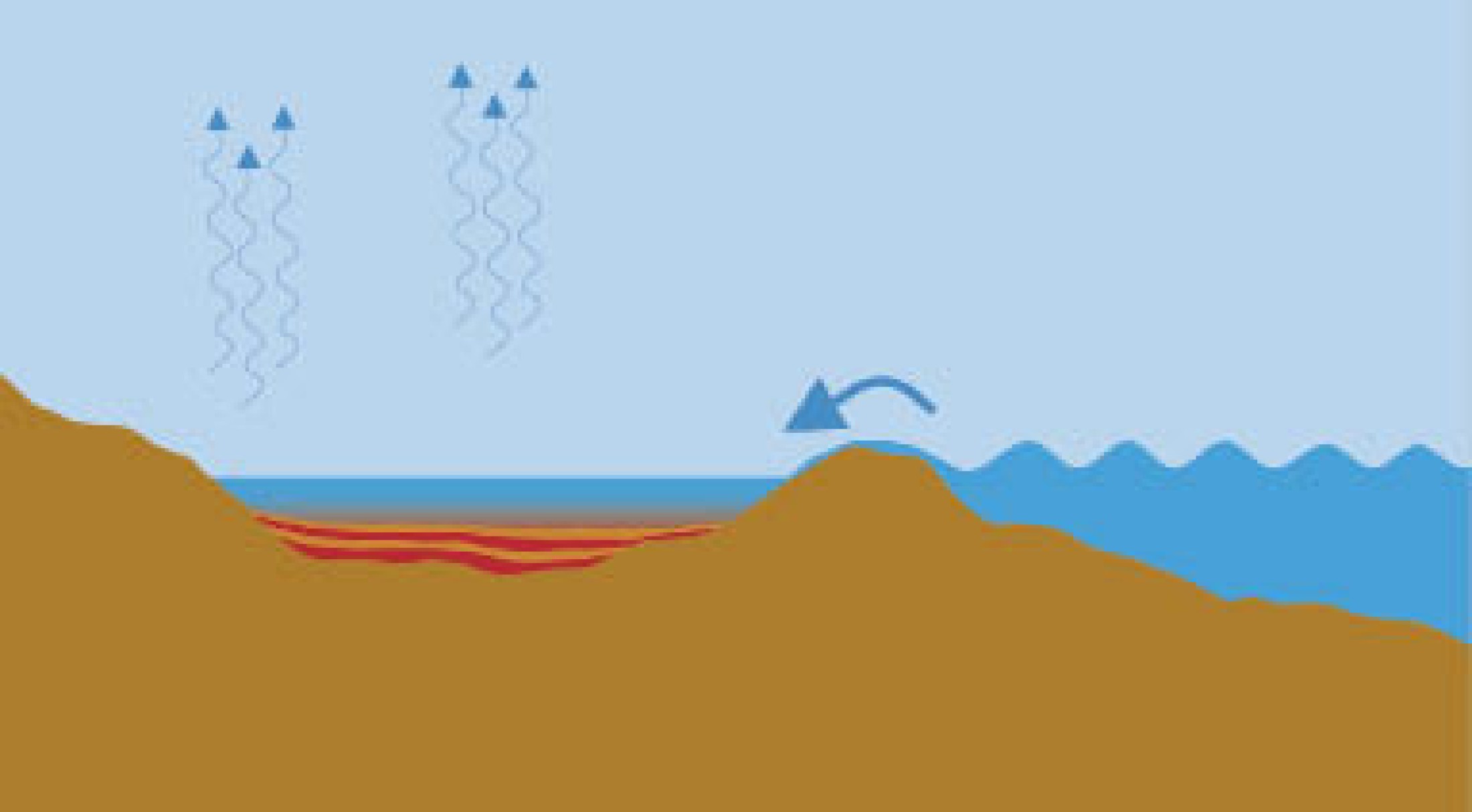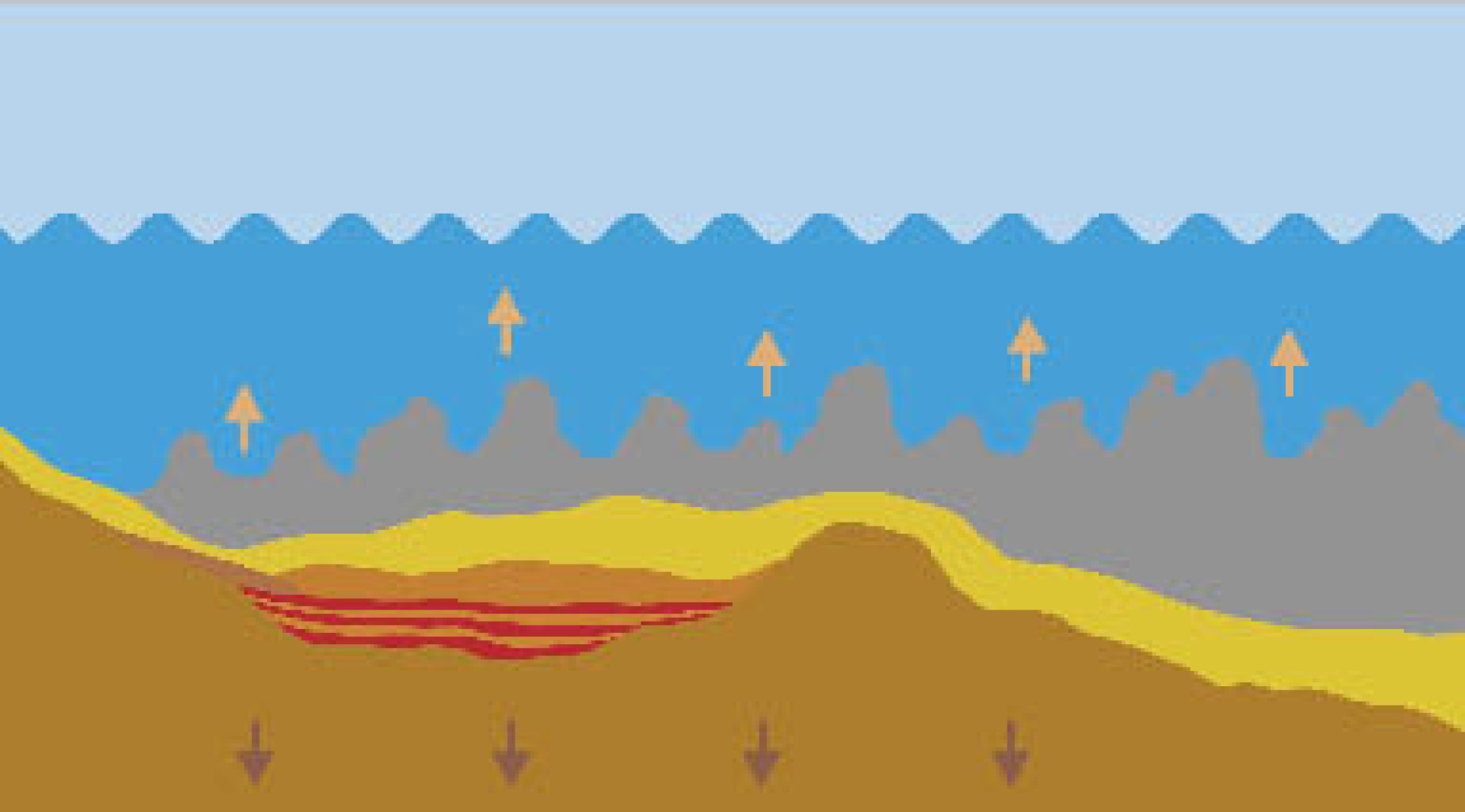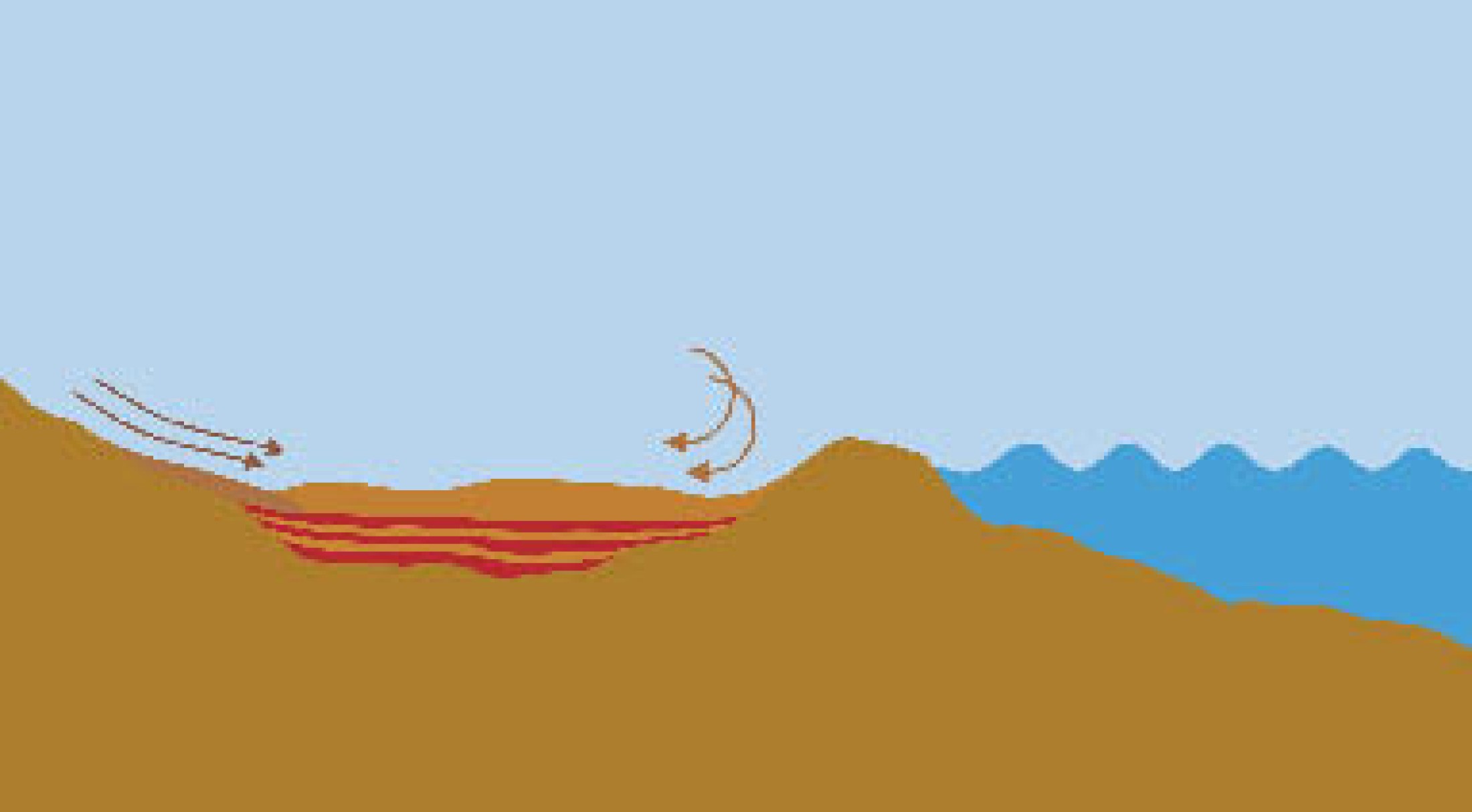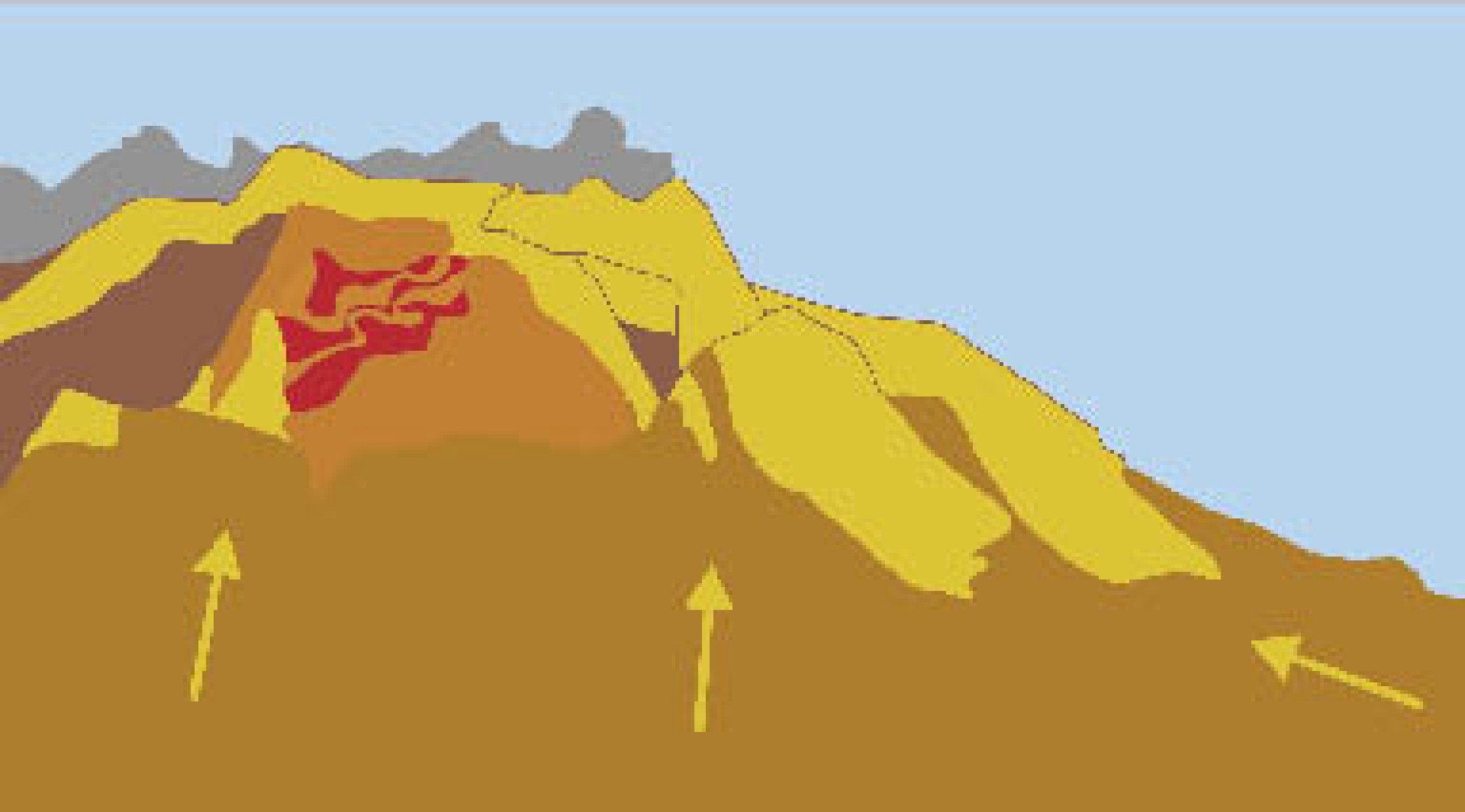The development of the salt reserves
The Eastern Alpine salt deposits reach from Hall in the Tyrol to the Hall Valley near Mariazell. There are only a few places where the deposits are located immediately beneath the surface; these commonly show up as salt springs. Most salt reserves are deposits left behind in areas which used to be covered by the sea. Sea water is made up of 3.5% dissolved salts.Duration of salt formation in the Salzkammergut region
Components of sea water and rock salt
Deposits during the evaporation process
Other components of rock salt in the Salzkammergut region
Duration of salt formation in the Salzkammergut region
Terrestrial salt deposits for the most part represent sediments laid down by ancient seas. They formed at various epochs, from the beginning of the Palaeozoic up to the Tertiary and Quaternary, and the formation processes continue today. The salt deposits in the Salzkammergut formed predominantly in the late Permian (about 260 to 251 Ma), in the Early Triassic and, with interruptions, up to the beginning of the Middle Triassic (about 251 to 244 Ma).Components of sea water and rock salt
The oceans hold the largest salt reserves in the world. Sea water is a saline solution containing various salts, mainly common salt, which is a chemical compound of the elements sodium and chlorine (NaCl). In addition to about 3.5% by weight of sodium chloride, sea water also contains calcium carbonate, calcium sulphate, magnesium sulphate, potassium chloride and various other dissolved salts. As a mineral, sodium chloride occurs in nature – and in Hallstatt – mostly in a very pure form, namely as rock salt, the dry and solid form of common salt.Rock salt forms from sea water primarily in regions with a warm and dry (arid) climate. In shallow sea basins partly separated from the main body of oceanic water ('salt lagoons') evaporation occurs and the salts precipitate out from the concentrated brine solution. The decisive factor for the formation of rock salt is the fact that more water evaporates in the partly separated sea basins than is re-introduced by rain, rivers, or new marine input. Because of evaporation, the quantity of water inside the natural basin decreases continuously, while the salt content of the solution increases. Each salt compound has its own specific and limited solubility in water, so that only a certain concentration can be dissolved. Past the limit of solubility, the excess of salt that cannot remain in liquid is deposited in solid form.
Deposits during the evaporation process
Of the many types of chemical salts that are dissolved in sea water, calcium carbonate (which, in solid form is limestone) and calcium magnesium carbonate (dolomitic limestone) have the lowest solubility, which means that they are the first to precipitate when sea water evaporates. First, they are deposited at the bottom of the 'salt lagoon' in the form of soft limestone and dolomitic 'sludge', which will form sedimentary rocks at a point when at least 75% of the water has evaporated.Once 84% of the water has evaporated, calcium sulphate reaches its solubility limit; on further evaporation, it precipitates from the solution and is deposited in the form of gypsum or, less commonly, anhydrite onto the preformed limestone and dolomite.
When about 88% of the water initially present in the sea water has evaporated, the solubility limit of common salt – the main culinary salt we are most familiar with - is reached. In natural conditions, however, sodium chloride does not precipitate as a solid upon reaching its saturation limit. In fact it requires a ‘supersaturated’ solution, concentrated to 1.3 times this level – i.e. corresponding to an evaporation of about 94% of the water. Only then does it deposits as rock salt on the gypsum or the anhydrite.
On yet further evaporation, the potassium salts and most of the magnesium salts precipitate from what remains of the now bitter brine lagoon. The process can go on until all the sea water has evaporated; it can also be interrupted or stopped at any stage of evaporation by the sudden input of sea water, or by the temporary input of freshwater from mainland rivers or from precipitation. Repeated interruptions of the concentration by evaporation lead to rhythmically layered sedimentation of the substances dissolved in the sea water. This process can take millions of years.
Other components of rock salt in the Salzkammergut region
The various evaporated deposits in the Salzkammergut in Austria contain an average of 45% to 65% of rock salt (halite). The majority of the remaining deposits are composed of saltembedded boulders of mudstone and siltstone and, less frequently, fine sandstone. The grade of the material varies as it was formed by the vagaries of deposition affecting the deposition of various rock weathering products by rivers in the course of a number of interruptions of the water evaporation process in the coastal lagoon; the anhydrites are (like the rock salt) products of sea water evaporation. In some places in the Hallstatt formation, we encounter the conglomerate bands of ‘Haselgebirge’ - salt closely alternating with sandstone, clay, anhydrite and gypsum.(Lobitzer, H. – Mayr, M.)





